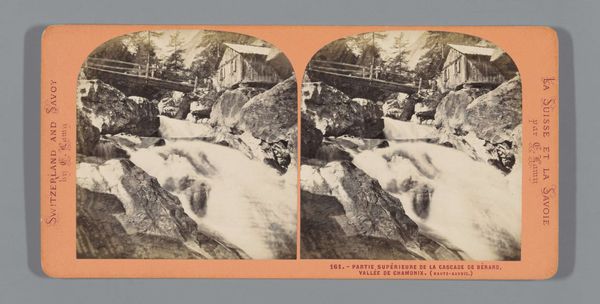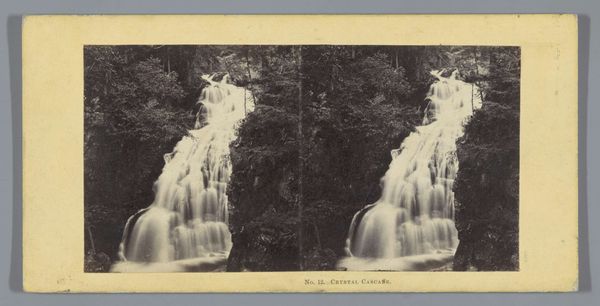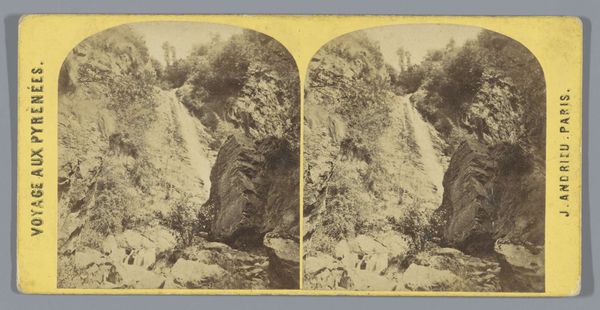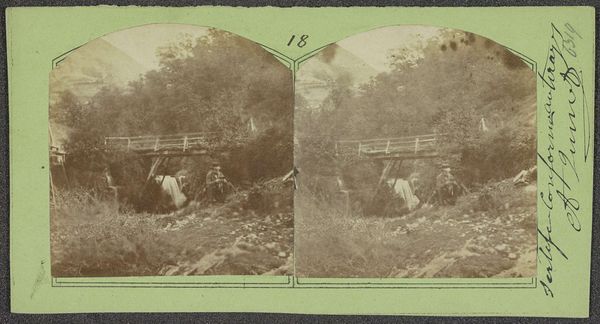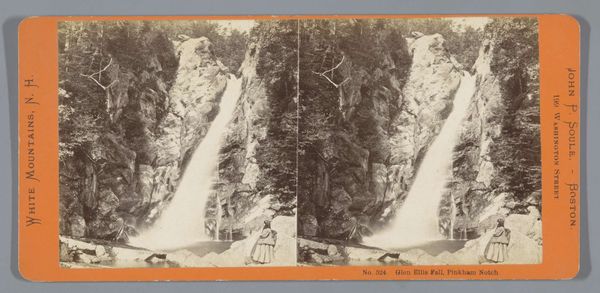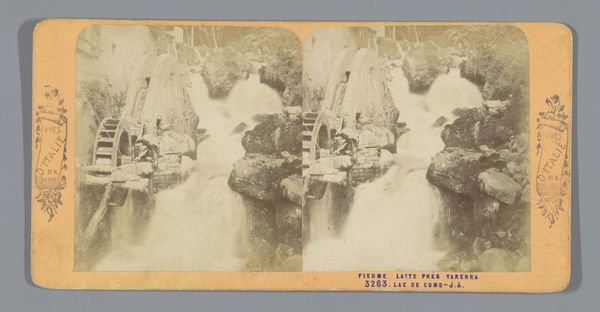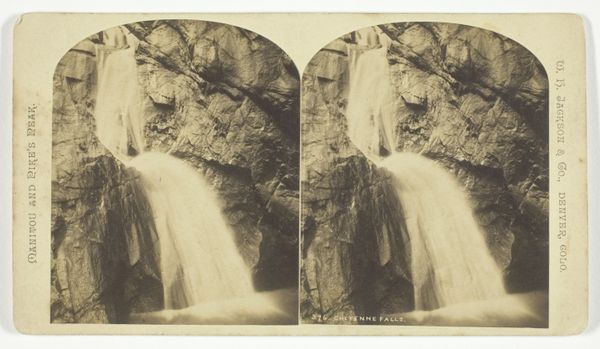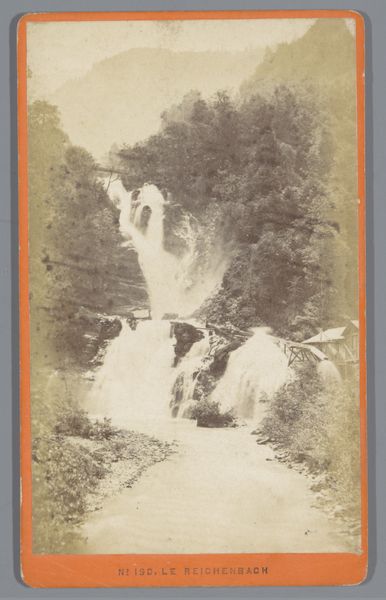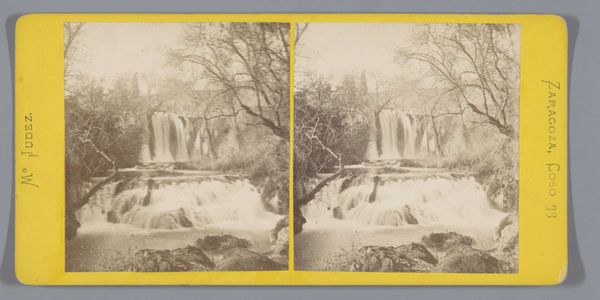
Dimensions: height 85 mm, width 170 mm
Copyright: Rijks Museum: Open Domain
Curator: Before us is "Stroomversnelling," a print dated circa 1860 to 1880 by Ernest Eléonor Pierre Lamy. Editor: My first impression is of a powerful natural force, carefully composed. The water seems to surge, and the tones create a peaceful, almost timeless quality. Curator: Indeed. Lamy's artistic intention is evident through his calculated arrangement of tonal values and spatial depths. He uses the pictorialist aesthetic, typical of that time, which favored a focus on creating an image that resembled a painting over accurate documentary. We can observe a harmonious, rather than chaotic effect despite the dynamism of the cascade. Editor: Right, but who has access to that harmony? Lamy presents nature through the lens of coloniality. It is a removed and mediated encounter. I see privilege in the assumed right to possess such pristine spaces for leisure and observation, and to turn a natural setting into a picturesque commodity. This relates to the Pyrenees’s rise as a tourist spot, reflecting deeper trends of appropriation. Curator: Interesting viewpoint! I find it fascinating how the visual weights shift. See how the darker boulders at the forefront draw the eye deeper, emphasizing a receding perspective according to pictorial depth conventions. There is something of a classical understanding of composition at play here, evident in the careful ordering. Editor: That order belies the raw exploitation. Look closer at the water itself. Its movement is deliberately subdued, conforming to a standard of beauty dictated by elite norms, turning the uncontrolled into something that appears, aesthetically and socially, compliant. The land yields, and the image presents that transaction with a seeming innocence. Curator: I appreciate your attention to the context, but when considering artistic intent, don’t you think we are perhaps superimposing modern critiques? Editor: Critique is inevitable. Art both reflects and informs societal power structures; engaging with the gaze Lamy reproduces is part of recognizing the photograph as a cultural object enmeshed within socio-political contexts. Curator: Perhaps we've both enriched this still image then – one by exploring its structured harmony and the other by unraveling its deeper cultural implications. Editor: Hopefully these layered insights bring listeners closer to their own interpretive experience and to recognizing their active role in that experience.
Comments
No comments
Be the first to comment and join the conversation on the ultimate creative platform.
